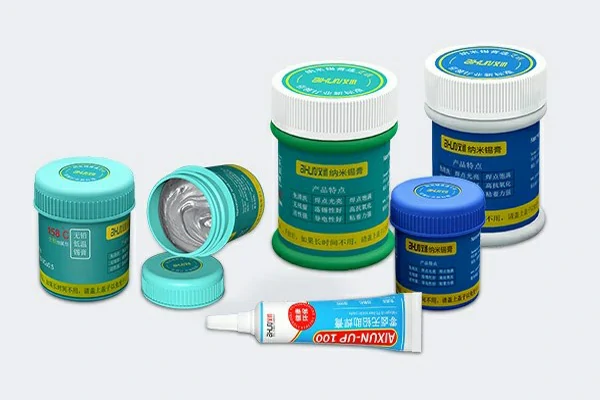
Soldering, the process of joining electrical components, relies on the use of solder, a crucial material in electronics manufacturing and repair. When it comes to solder, one important consideration is the presence or absence of lead.

The main difference between lead-free solder and tin-lead solder lies in their composition, specifically in the presence or absence of lead. Here are the key distinctions:
Composition: Tin-lead solder, also known as leaded solder, is an alloy of tin (Sn) and lead (Pb). The most common tin-lead solder alloy is the eutectic mixture of 63% tin and 37% lead (Sn63Pb37). On the other hand, lead-free solder is formulated without using lead. It is typically composed of alloys such as tin-silver-copper (SnAgCu), tin-silver (SnAg), or tin-copper (SnCu), among others.
Environmental Concerns: The use of lead-free solder has gained prominence due to environmental and health concerns associated with lead. Lead is a toxic substance that poses risks to human health and the environment, especially during manufacturing, disposal, and recycling processes. Lead-free solder helps reduce the environmental impact and potential health hazards associated with lead exposure.
Melting Points: Tin-lead solder alloys have lower melting points compared to most lead-free solder alloys. The eutectic composition of tin-lead solder (Sn63Pb37) has a melting point of approximately 183°C (361°F). In contrast, lead-free solder alloys typically have higher melting points, ranging from around 217°C (423°F) to 227°C (441°F) depending on the specific alloy composition.
Soldering Characteristics: Lead-free solder may have different soldering characteristics compared to tin-lead solder due to variations in alloy composition and melting points. Lead-free solder may require higher soldering temperatures and longer dwell times to achieve proper wetting and solder joint formation. Additionally, lead-free solder may have different mechanical and metallurgical properties, such as increased hardness, which can impact solder joint reliability.
RoHS Compliance: The Restriction of Hazardous Substances (RoHS) directive restricts the use of certain hazardous substances, including lead, in electronic and electrical equipment. Lead-free solder is essential for compliance with RoHS regulations, as it eliminates the use of lead in soldering processes.
It's important to note that the transition from tin-lead solder to lead-free solder has been driven by regulatory requirements and environmental considerations. The shift to lead-free solder has its own challenges and considerations, such as the need for proper equipment, rework process adjustments, and understanding the specific characteristics of lead-free solder alloys.
 WhatsApp
WhatsApp